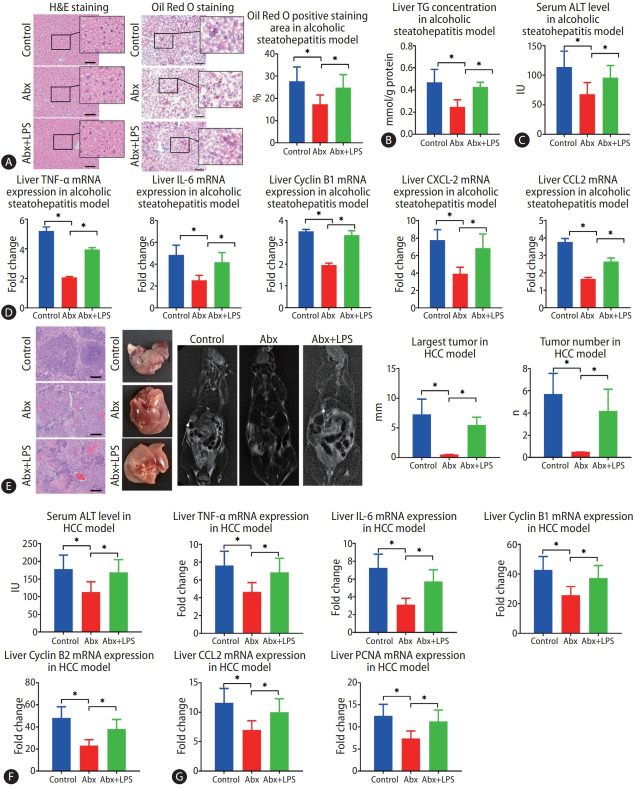Figure 4.
Intestinal lipopolysaccharide (LPS) contributes to alcohol-induced hepatosteatosis and subsequent hepatocellular carcinoma (HCC) in mice. (A) Hepatosteatosis was determined by hematoxylin and eosin (H&E) and Oil Red O staining after treatment with alcohol for 5 weeks (scale bar, 100 μm). (B, C) Liver triglyceride (TG) and serum alanine aminotransferase (ALT) concentrations were determined in the mouse model of alcoholic hepatosteatosis. (D) Liver levels of tumor necrosis factor (TNF)-α, interleukin (IL)-6, cyclin B1, C-X-C motif ligand 2 (CXCL-2), and chemokine ligand 2 (CCL2) genes were determined by qPCR in the alcoholic hepatosteatosis model. (E) Mouse liver tumors were presented by photography, H&E staining (scale bar, 200 μm), and magnetic resonance imaging (MRI) scan after development of the HCC model. The arrows indicate the location of tumors in MRI scanning. (F) The serum ALT concentration was determined in HCC mice. (G) Liver levels of TNF-α, IL-6, Cyclin B1, cyclin B2, CCL2, and proliferating cell nuclear antigen (PCNA) genes were determined by qPCR in the HCC model. Abx, antibiotics; qPCR, quantitative polymerase chain reaction. *P<0.05 compared between groups (5–8 mice per experimental group).

